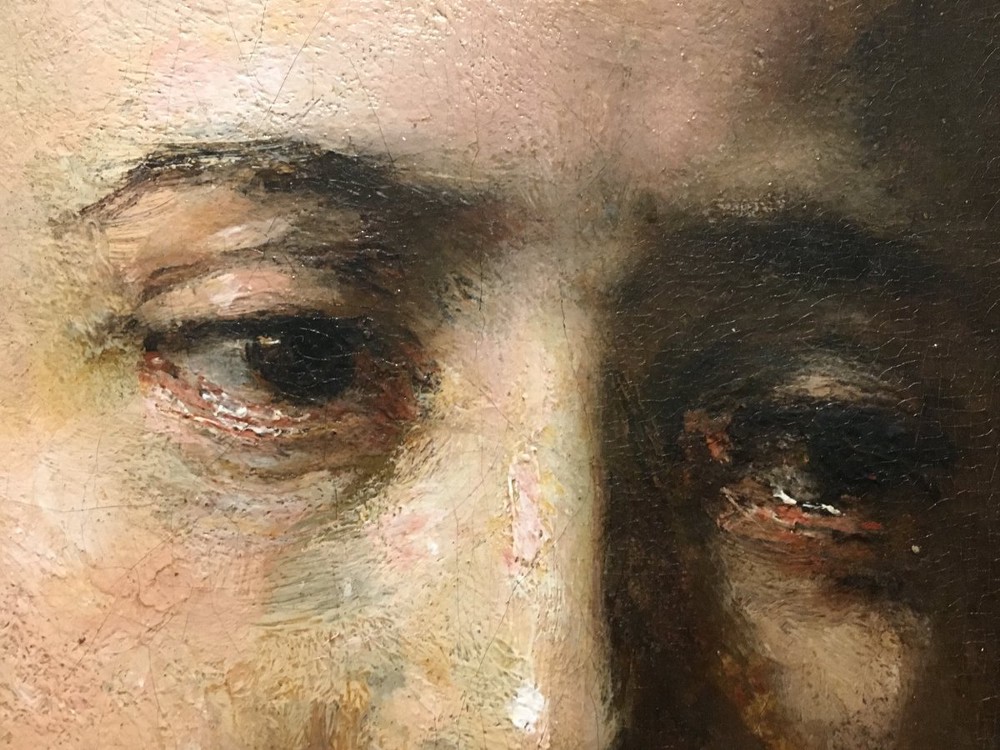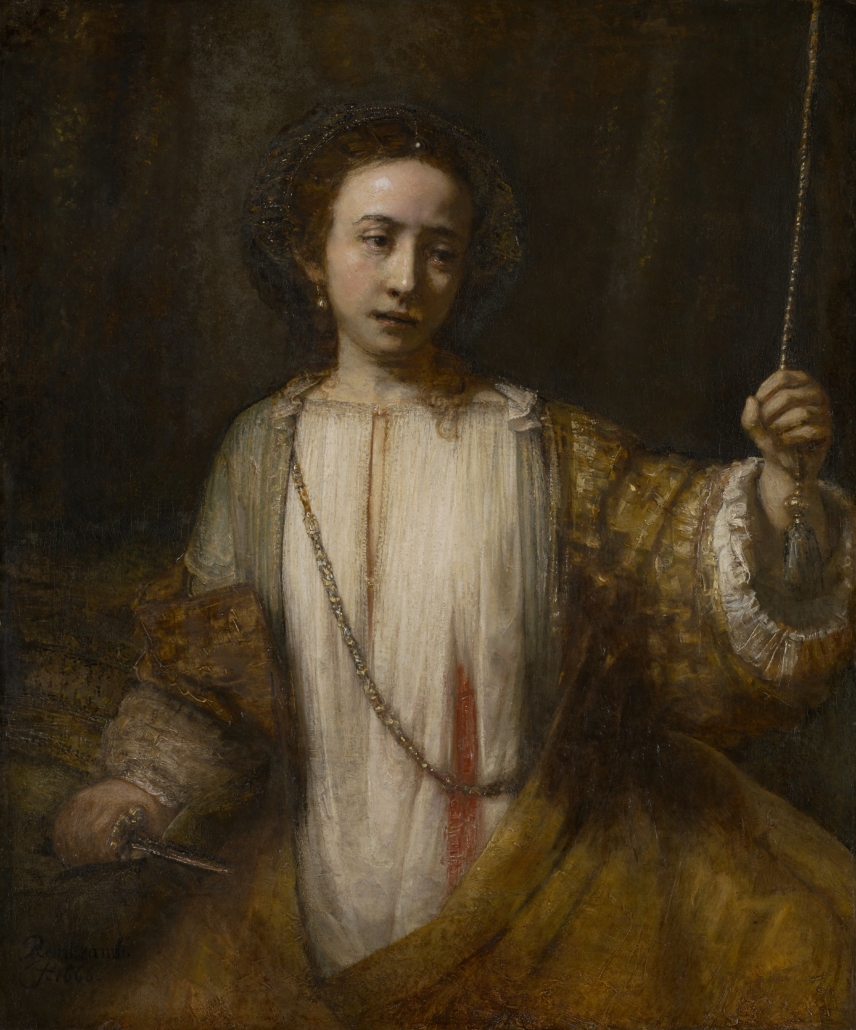
Background:
The story of Lucretia has been painted many times. The story dates back to early Roman times when Lucretia killed herself after being raped by a nobleman. An alternative version of the story state that she killed herself rather than allow herself to be forced to have sex with the nobleman.
In Rembrandt’s case, this story serves as a metaphor for the death of his lover who had been shunned by society. Although they lived together as husband and wife, they were not able to marry due to stipulations in the will of Rembrandt’s first wife. When their relationship was discovered, Rembrandt and his lover, Hendrickje Stoffels, were cast out by society. Rembrandt blamed Hendrickje’s death on this poor treatment that they received.
This painting currently lives in the Minneapolis Institute of Art in Minneapolis, Minnesota.

The spatial structure of Rembrandt’s Lucretia leads us to explore the relationship between life and death, being and not, becoming and returning. Lucretia emerges from out of a dark amorphous background, the dust from whence we come. As we move into, through and down her, we proceed into a large brown somewhat amorphous shape. This area is similar to the background above and behind her, and yet distinctly different in its solidity. Despite being quite amorphous and difficult to describe or understand as a shape, it is also solid and gives one a feeling of stability. While Lucretia comes out of the ethereal, and is returning there, she is still a solid, strong figure standing on a firm foundation. In addition to standing on a firm foundation, Lucretia is a figure in action. She is not standing perfectly parallel to the picture plane, rather she is offset due to her own motion, thus showing a sense movement and power.

Lucretia holds a knife which is painted very solidly, with highlights defined by thick layers of lead white paint, resulting in a physical object very much of this world. The other hand pulls on a similarly physical object, a cord and tassel. It is supposed that Lucretia is pulling the cord either to call her father and brother or to close the curtains on her bed. Either way, the pulling of the cord shows a strong action. The cord moves diagonally into the picture in a counter to the thrust of her body, setting up a counterpoint in movement, as well as a sense of an end to the scene by way of her own choosing. The cord moves up into the darkness and mysteriousness of the background, as if to bring down that curtain to end the scene, and thus her life.



There is an overall sense of the whole painting weeping. The crying begins with the highlight on her forehead and continues down and falls over and past her eye. It is in the heavy highlight on her lower eyelids and the tender way her hair falls over her shoulder. It is in the opening of her shirt over her chest, and the shadow which accompanies the shirt downward. It is in the falling of the blood down her shirt. Most importantly, the sense of weeping is in all of the brushwork, that embodies the falling down of a shower of tears. Rembrandt masterfully pulls the paint in a physically palpable way. There is a stringy quality to some of his paint that gives a feeling of attenuated pulling, a feeling of how Lucretia has been pushed and pulled to the breaking point.


Much of the paint in her sleeves is applied roughly with a palette knife, and large sections of her sleeves reveal where the paint has actually been cut into with a knife edge. The violence does not end there, the blood flowing out of her is rich and thick, it covers her necklace, taking over her jewels and showing us the folly of riches in the impermanence of life. These areas are painted roughly and thickly, while the clasp of her shirt is light and delicate, barely held together. The clasp of her shirt is already passing from being, as is Lucretia herself.

The whole painting weeps and leads us downwards almost fully into despair, but it does not leave us there. As we descend to the large brown area in the bottom, we are moved back and up through the dark background area and finally led to arrive in the pearl in center of her hair just above her forehead. The pearl is easy to miss at first, and due to its size is not the first thing one sees upon entering the painting. At first one sees the blood, the knife, the cord, sadness and tears. However there is a beacon emanating from the pearl that will not let us go and pulls us back. The pearl is a becoming; it emerges from her hair and shines through all of the darkness of her hair, the background, the tears and death. Pearls are notable as gems in that they grow from living beings. The pearl in Lucretia’s head shines like a beacon, giving us a feeling of purity, innocence and nobility. While she might fall with the blood that is flowing out of her, the sense of light and integrity in her will never die. Pearls can be seen as symbolic of the suffering of Jesus Christ, as well as the passage of angels. This is giving Lucretia a holy space, one who has suffered and is passing up to heaven. Even without the religious metaphors, the treatment of the pearl gives us a feeling of a light emerging from darkness and moving upwards. As we look at the pearl we are moved to stand upright. We decline and bow with the blood and tears of Lucretia, but the pearl pulls us upright. We stand up strong and straight, possessed of a power of righteousness that will not let go of us.

In this article we have been looking at the painting Lucretia that Rembrandt painted in 1666. There is another painting by Rembrandt from 1664 also named Lucretia. That painting lives at the National Gallery of Art in Washington, DC.
I have spent many hours looking at this painting, it has an immense power to transport deep feelings to the viewer. As an artist Rembrandt has much to teach about painting and creating work which imbues the viewer with rich sensations. Rembrandt inspires me to dig deeper in my work to create something that will last through time and touch people deeply.





